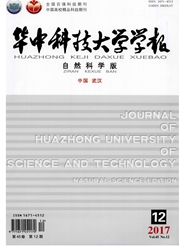

 中文摘要:
中文摘要:
坑中坑施工大多在基坑开挖的最末阶段,开挖尺寸相对较小,变形要求不严,前期未曾重视或者设计未加考虑,最后突击施工造成诸多施工问题。武汉某典型深基坑中坑中坑土钉墙支护施工未能成功进行,证明土钉墙并不适合该类含水丰富的粉细砂岩土层,并得出以下认识:武汉地区Ⅲ级阶地中41粉细砂中黏粒含量较高,渗透系数小,管井降水效果不好;建议施工措施为轻型井点降水或拉森钢板桩,辅以高压旋喷桩地基处理;拉森钢板桩可以形成抗弯刚度大钢板墙,可回收再利用,可在应急施工中优先考虑;在坑中坑开挖进行钢板桩支护结构布置时,宜加强整体刚度,在合适的高度焊接钢腰梁和支撑。
 英文摘要:
英文摘要:
Most pit-in-pit construction is at the end of the foundation excavation, the excavation size in the pit-in-pit construction is small and the deformation requirement is not very strict, constructors never pay attention to the problem or the problem is not considered in design in earlier stage, at last it centralized construction results in many construction problems. Soil nail wall support construction of the pit-in-pit excavation in Wuhan was not finished successfully, which proved that soil nail wall cannot be suitable in the fine sandstone soil which have rich water and could obtain that: clay content of the Ⅲ terraces (4)1 silty sand in Wuhan is high, the permeability coefficient is small, the effect of the pipe well dewatering is not well; light well point dewatering and Larson steel sheet pile should be suggested in the construction firstly, and supplemented by high pressure spraying pile foundation treatment; Larson steel sheet pile should be considered firstly because they can form steel wall which has flexural rigidity and is recyclable; steel sheet pile retaining structure arrangement in the pit-in-pit excavation should strengthen the overall stiffness, at the right height weld steel middle beam and support.
 同期刊论文项目
同期刊论文项目
 同项目期刊论文
同项目期刊论文
 期刊信息
期刊信息
